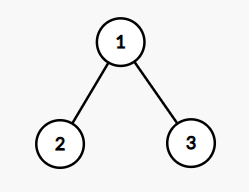Preparando MOJI
You are given a tree with $$$n$$$ nodes. As a reminder, a tree is a connected undirected graph without cycles.
Let $$$a_1, a_2, \ldots, a_n$$$ be a sequence of integers. Perform the following operation exactly $$$n$$$ times:
For each integer $$$k$$$ from $$$1$$$ to $$$n$$$, find the number, modulo $$$998\,244\,353$$$, of different sequences $$$a_1, a_2, \ldots, a_n$$$ that satisfy the following conditions:
The first line contains a single integer $$$t$$$ ($$$1 \le t \le 10\,000$$$) — the number of test cases.
The first line of each test case contains a single integer $$$n$$$ ($$$2 \le n \le 10^5$$$).
Each of the next $$$n - 1$$$ lines contains two integers $$$u$$$ and $$$v$$$ ($$$1 \le u, v \le n$$$) indicating there is an edge between vertices $$$u$$$ and $$$v$$$. It is guaranteed that the given edges form a tree.
It is guaranteed that the sum of $$$n$$$ over all test cases doesn't exceed $$$3 \cdot 10^5$$$.
For each test case, print $$$n$$$ integers in a single line, where for each $$$k$$$ from $$$1$$$ to $$$n$$$, the $$$k$$$-th integer denotes the answer when $$$\operatorname{gcd}$$$ equals to $$$k$$$.
2 3 2 1 1 3 2 1 2
3 1 0 2 0
In the first test case,

Note that here we are counting the number of different sequences, not the number of different orders of deleting nodes.